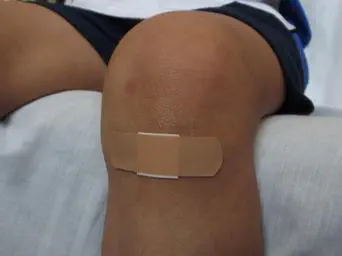Returning to Run

The only thing sadder than a runner sidelined by injury or illness is a runner sidelined by a relapse after returning to run. Unfortunately, knowing when and how to return to running can be more of an art than a science. Starting back too early, or with the same intensity as before, risks being sidelined again, possibly for longer than before. But starting back too slowly wastes precious training days. So how do runners strike the right ballance of risk vs. reward?
My approach is guided by two considerations. First, consistency comes before quality. It’s hard to have a quality workout, if you aren’t running on a regular, consistent basis. Thus, we must initially sacrifice quality in favor of easy runs, to get back to a consist pattern of running, before re-introducing quality runs.
Second, your body will tend to recover cardio-vascular fitness quicker than it recovers resilience in bones, joints, and tendons to the impact of running. Thus, you’ll need to go easier than you feel you could, as you return to run, or risk injury.
Thus, I lean toward a more conservative approach to returning to run.
When should I return to running?
If you’ve been sidelined from running due to injury or illness, you are probably itching to get back to running as soon as you can.
Before you start, there are a few things to consider:
First, are you feeling better? Ideally you want your pain or other symptoms to have completely subsided, or at least be minimal. If you don’t feel good walking, you aren’t going to feel good running. Moreover if you have pain that would alter your running gait, not only are you likely to exacerbate the injury, but you might also cause new injuries as you compensate for your injury with an altered gait. An altered gait is a telltale sign you are not ready.
Second, make sure you are cleared by a medical professional, perhaps your doctor physical therapist. They are in the best position to determine whether you are sufficiently recovered to restart running.
Strategies for returning from illness
If you’ve been sick for a week or two, don’t panic. You probably haven’t lost much, if any, fitness. However, even if you are starting to feel fine around the house, that doesn’t mean your ready to return to your normal running schedule. So, it’s important to give yourself some grace and enough opportunity to fully recover.
You may feel like you are ready to simply pick up where you left off. Do yourself a favor and take at least one run to test the waters. Here’s what that looks like:
-
Be sure to warm up with some light activity or walking
-
Run at a very easy pace (easier than you think or want to)
-
Choose a MAXIMUM amount of time to run that is half or less what would be normal for you
-
Check in with yourself periodically during the run
- If you feel good, keep going, but keep the pace easy and don’t go beyond your MAXIMUM time
- If you don’t feel good, cut it short
Notice the recommendation above is to limit yourself by time, not distance. This approach will help minimize the temptation to run faster. You should be running at a “conversational pace,” meaning you could hold a conversation, with complete sentences.
If your run did not feel good, or later you feel drained or a return of symptoms, take more time off. When you try again, try running for a shorter duration.
If your run felt good, and you continued to feel good after your run, great! Your next run could be a longer duration (remember, time not distance), but keep the pace easy. Once you have returned to consistent easy running, you can ease back into your normal routine.
Note that the above applies if your illness was only a couple of weeks. If you have a longer illness, you might want to start even slower. Consider using the return-to-run patter in the next section.
Strategies for returning from injury
If you’ve had a significant injury that has kept you away from running for more than a few days, you may be tempted to jump back in when you left off. This approach can often lead to an injury relapse. To avoid this, ease gently back into running.
Try this “return to run” pattern.
Warm up: 5 minutes
Repeat 4 times:
Walk briskly: 4 minutes
Run easy: 1 minute
Cool down: 5 minutes
Ok, I know what you are thinking: “That doesn’t sound like a lot of running.” It’s not. And you may feel ridiculous running for just 1 minute at a time. However, if you aren’t ready to return to run, the amount of damage you are likely to do is minimal. Which means, less setback.
If during the “return to run” sequence you feel significant symptoms, stop. Walk it back. Take a few days until you are feeling better (see “When can I return to running” above), and try again.
If you felt good during and after your run, great! Take a day off, and try it again.
After your second successful run, take a day off and then repeat the patter, but increase your run time. Instead of walking 4 minutes and running 1 minute, you’ll walk 3 minutes and run 2 minutes. When you can do that successfully twice, progress to 2 walk, 3 run. Then go to 1 walk, 4 run. If at any point you have trouble, take some time off and either back up a step, or start again from the beginning.
Once you make it to the end of the pattern, you are ready for a continuous easy run: 5 minutes warmup, 15 minutes easy run, 5 minutes cool down. From there, increase your time until you have a good consistent pattern of running. Eventually, you will be ready to return to your typical running distances and paces.
Notice that the above pattern is very conservative. You may feel that your injury wasn’t that significant, or that your outage was short. Great. It’s easy to modify the above program to fit your needs. If you feel confident that the risk is low, eliminate some of the steps and progress faster. Just be conservative.
A word about grace and patience
The patterns described above require patience and humility. Give yourself the grace and time to get better. Remember, running is a gift you give yourself.
Don’t allow yourself to be frustrated by running short and easy runs. Instead, allow yourself to feel good that you are running again, even if in a very controlled and limited way. The limitations are temporary. Recognize that this is a process. Trust the process.
Finally, remember that the consequences of ramping up too fast is a relapse. And a relapse means not running for even longer. An a consistent runner is always faster than an injured runner.
As always: If you move with a purpose, you’re an athlete, and we’re here to help you reach your goals. If you need help, check out AllPaceAthletics.
Be well, and be safe.
Coach Mark
Owner and Coach
AllPace Athletics
